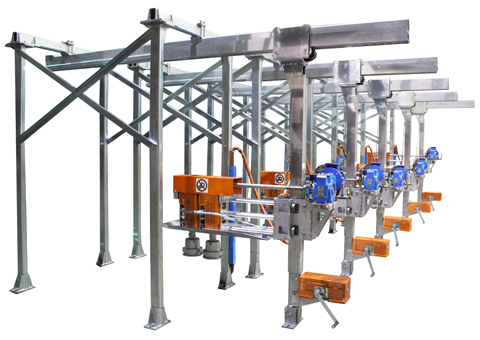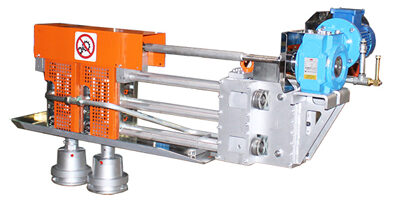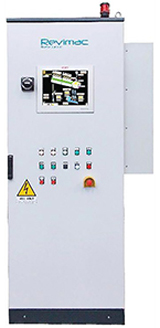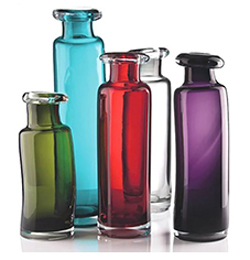One of the most common problems in the glass industry is the Zirconium cord presence down the glass flow, commonly knowns as cat scratches.
This situation is usual with fused cast refractory, which tend to exude especially in the furnace, but also from working ends or forehearths. The zirconium parts exuding from refractories are heavier than glass, and sink in the channel bed forming a line, that will cause visible defect on the container if not properly treated.
This phenomenon increases when refractories are close to the end of their campaign-life, and so when the structural integrity of furnace and channels is secure, using stirrer mechanism could help to increase glass quality.
But there are other good reasons to stir the glass, such as to enhance glass temperature homogeneity or when we colour glass in the forehearth; in this case it will be mandatory to install a few lines downstream the frit injection point.
Stirrer RST20
 To address the above-mentioned issue Revimac developed its first solution many decades ago by providing a mechanism that will stir the molten glass in the equalizing zone.
To address the above-mentioned issue Revimac developed its first solution many decades ago by providing a mechanism that will stir the molten glass in the equalizing zone.
Recently the Revimac’s stirrer design was updated with the new RST20, with this recent evolution, the system adopted a gear-driven blade to increase longevity and reliability. Revimac directed its effort to provide a solution that can minimize maintenance operations, exactly because of the harsh environment in which this mechanism is located.
 The most common set-up will be by using twin, counter-rotating, over-lapping paddle type stirrers, but many different combinations are available.
The most common set-up will be by using twin, counter-rotating, over-lapping paddle type stirrers, but many different combinations are available.
It’s possible to choose between solutions with 1, 2, 3, or 4 heads (stirrers) depending on the size of the forehearth channel and the needs of the customer.
This last version have been chose by Vetri Speciali, for their San Vito al Tagliamento plant where they installed the Revimac RST20 stirrer mechanism in 5 lines.
Mechanical structure
 Steel frame (portal) to be installed in the equalization zone;
Steel frame (portal) to be installed in the equalization zone;- Manual hoist winch for lifting and lowering the stirrer heads;
- Stirrer unit single or double (1+2, 2+1, 2+2) including saddle, air-cooled electric motor, transmission with protective cover, refractory stirrer housing head.
- Gear driven blade
Control system
- Main Cabinet featuring individual inverters with RPM counter and display, power supply, emergency circuit, signal lamps and connecting cables, manual/automatic selector.
- Local Control Console featuring emergency, alarm, reset, start & stop buttons, local/remote selector, rotation selector and connecting cables.
Advantages
 Glass thermal homogeneity
Glass thermal homogeneity- Cord removal
 For colouring forehearths there’s a specific version designed to stir the molten glass with the colourant (frit) to obtain a homogeneous colouration. Stirring stations dedicated to glass colouring forehearths are customized in accordance with the pull, the temperature, the glass composition and the kind of colouring to achieve.
For colouring forehearths there’s a specific version designed to stir the molten glass with the colourant (frit) to obtain a homogeneous colouration. Stirring stations dedicated to glass colouring forehearths are customized in accordance with the pull, the temperature, the glass composition and the kind of colouring to achieve.
Stirrer control units can be integrated in the forehearth control cabinet.
 Refractory stirrers
Refractory stirrers
They can be of various forms and types, the Revimac RST system is compatible with all models in the market.
They can be screw type, or paddle type.





